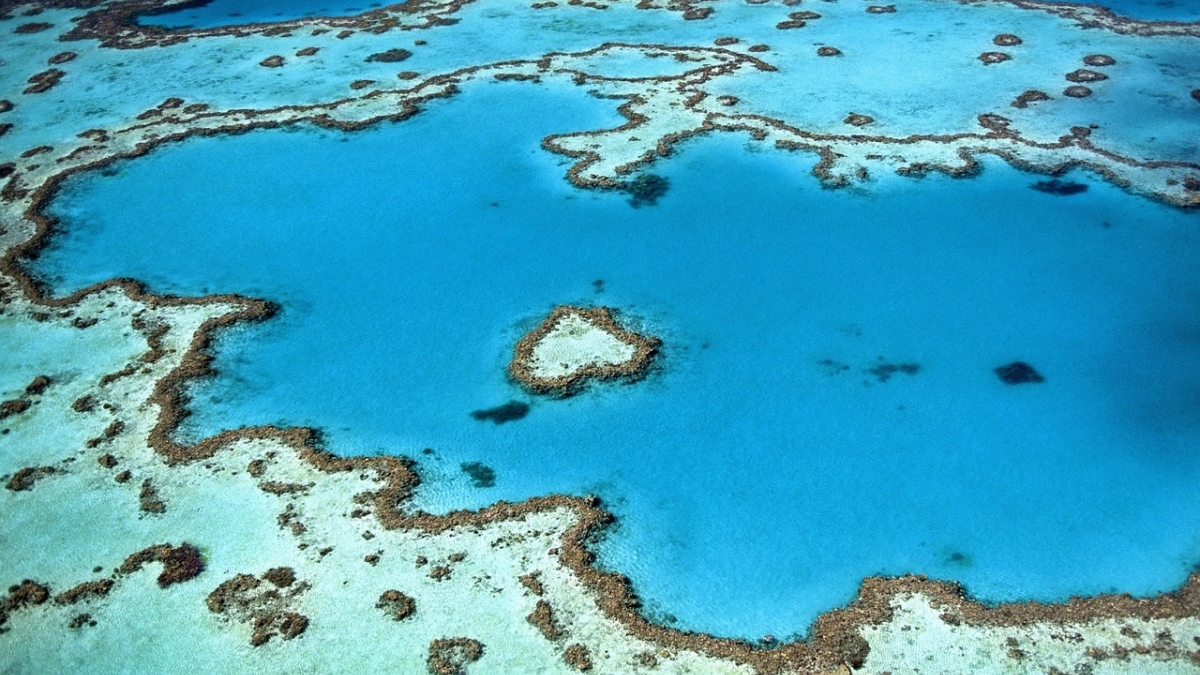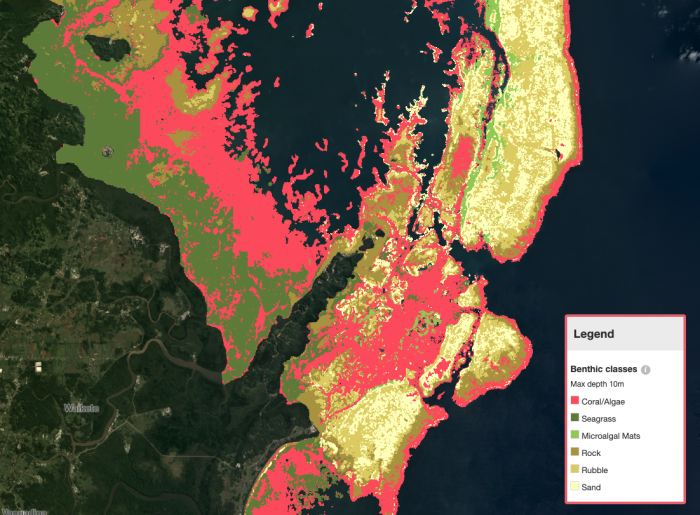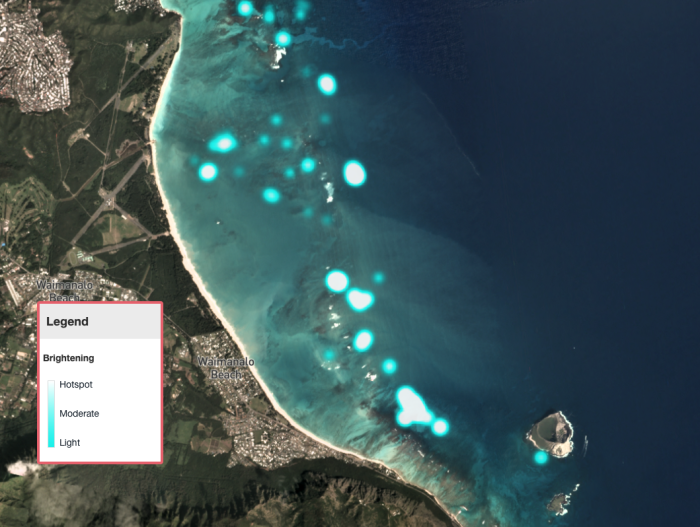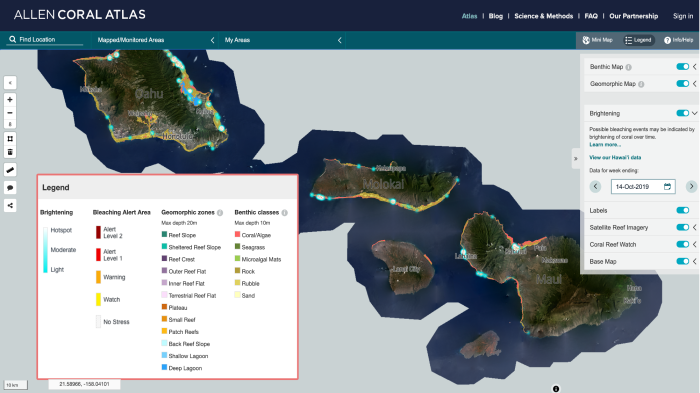The world’s coral reefs are at risk.
To save them, we’ve got to see them — clearly, and in the “big picture.”
Fans of Disney’s "Finding Nemo" see coral reefs as vibrant, colorful underwater worlds. In real life, the world’s reefs face serious challenges, including rising sea temperatures, choking sediments and overfishing.
The Allen Coral Atlas powers solutions to these problems with high-resolution mapping and monitoring that governments and researchers can put to use to save coral reefs. It is funded by Vulcan Inc., a private company founded by Jody Allen and the late Paul Allen with a mission to make and leave the world a better place. The atlas was developed through a unique partnership between Arizona State University, University of Queensland, National Geographic Society, Planet and Vulcan.
A benthic map of the state of coral reefs around Fiji. Image courtesy Allen Coral Atlas
As of the first of the year, Arizona State University has taken on the leadership of the atlas. It’s a powerful tool to map and monitor coral reefs around the globe and provides that “big picture” scientists and policymakers need to bring coral reefs back to health.
ASU President Michael Crow announced that Greg Asner will be the new lead of the Allen Coral Atlas. Asner is currently the director of the Center for Global Discovery and Conservation Science (GDCS) at ASU.
“We are pleased to take the leadership role in this incredible partnership with Vulcan and other organizations of the Allen Coral Atlas," Crow said. "The goals of the atlas are a perfect fit with ASU’s mission to achieve sustainable futures at a global level, and GDCS is the ideal home for the atlas going forward.”
The Allen Coral Atlas maps can show changes among the world’s massive reefs at a level of detail of just a few square meters. From the maps and other analytics, reef scientists and managers can spot threats and head off risks with innovative solutions.
“For nearly three years, my team and our partners have been working in the trenches to create the Allen Coral Atlas from a concept to a scalable mapping and monitoring program," Asner said. "Following Vulcan’s outstanding leadership over these past years, GDCS is well-positioned to take on management of the program and its partnerships.”
Reefs do far more than serve as a home for colorful marine life. According to reporting by National Geographic, it’s estimated that 500 million people earn their livings from fishing and tourism that depend on coral reefs. These underwater ecosystems can also soften the blows of hurricanes on fragile coastlines.
In addition to the global maps, many new capabilities are slated to roll out this year, such as technology that will make it possible to detect subtle changes to reefs over time. Until now, most science has been focused on the damage to reefs from large-scale “bleaching events” that interfere with the life cycles of the organisms that build reefs. But sediments can also cause damage, so the GDCS team has built the capacity to see ocean sediment and quantify its severity. With this new technology in hand, researchers can quickly identify and act on potential threats to reef ecosystems. Future applications of the atlas technology will include robotics, artificial intelligence and new satellites to further expand the platform’s capacity.
Atlas image of the bleaching of coral reefs at Waimanalo Beach, Hawaii. Courtesy of Allen Coral Atlas
In 2019, GDCS piloted a beta version of the atlas monitoring system in the Hawaiian Islands during the Pacific Ocean warming event. ASU and its partnering agencies engaged Hawaii's citizens with the new monitoring system to report observed coral bleaching throughout the archipelago. Community feedback helped atlas scientists tune the new algorithms to actual coral bleaching as it occurred.
“The new monitoring system literally changed how we view coral bleaching and thus the management responses we can invoke to reduce pressure on the reef,” said Brian Neilson, head of Hawaii’s Division of Aquatic Resources.
Allen Coral Atlas maps continue to roll out, but they have already had an impact worldwide. In 2020, the atlas habitat maps played a key role in the Sri Lankan government’s effort to expand their marine national parks and to carry out reef restoration work.
“Our growing international experience continues to drive home the scalable potential of our effort, mapping and monitoring a world of coral reefs at a resolution that is actionable at local to regional levels,” said Paulina Gerstner, ASU program director for the Allen Coral Atlas.
Right now, users can download habitat maps, satellite imagery and ocean depth data from the Allen Coral Atlas website. GDCS will also be inviting ASU students to apply for upcoming internships and opportunities to collaborate on this exciting research venture.
An example of the multitude of data available on the Hawaiian Islands, among other worldwide locations, on the atlas tool. Courtesy Allen Coral Atlas.
“This is the tip of the iceberg in global reef science for governance and the public. We can and must do more to support activities that increase awareness and drive innovations to protect, restore and steward coral reefs into the future,” Asner said.
The Center for Global Discovery and Conservation Science is part of the College of Liberal Arts and Sciences as well as the Julie Ann Wrigley Global Futures Laboratory at ASU, an effort to make meaningful contributions to ensuring a habitable planet and a future in which well-being is attainable.
More Environment and sustainability

Charles Redman, founder of the School of Sustainability, faces a new adventure: Retirement
At the retirement celebration for Charles Redman on Oct. 22, two messages persisted: Redman’s contributions to Arizona State University helped to shape the interdisciplinary efforts we now find…

10 climate insights to guide our future
A group of globally renowned social, natural and climate scientists has once again convened to offer their newest annual synthesis report, “10 New Insights in Climate Science.”The report, published…

The future is green: Job demand translates to high employability for ASU sustainability grads
A 2023 report by Forbes on the state of green jobs confirmed what Arizona State University has been trumpeting for years: Sustainability will play a large part in the new economy.The report suggests…



